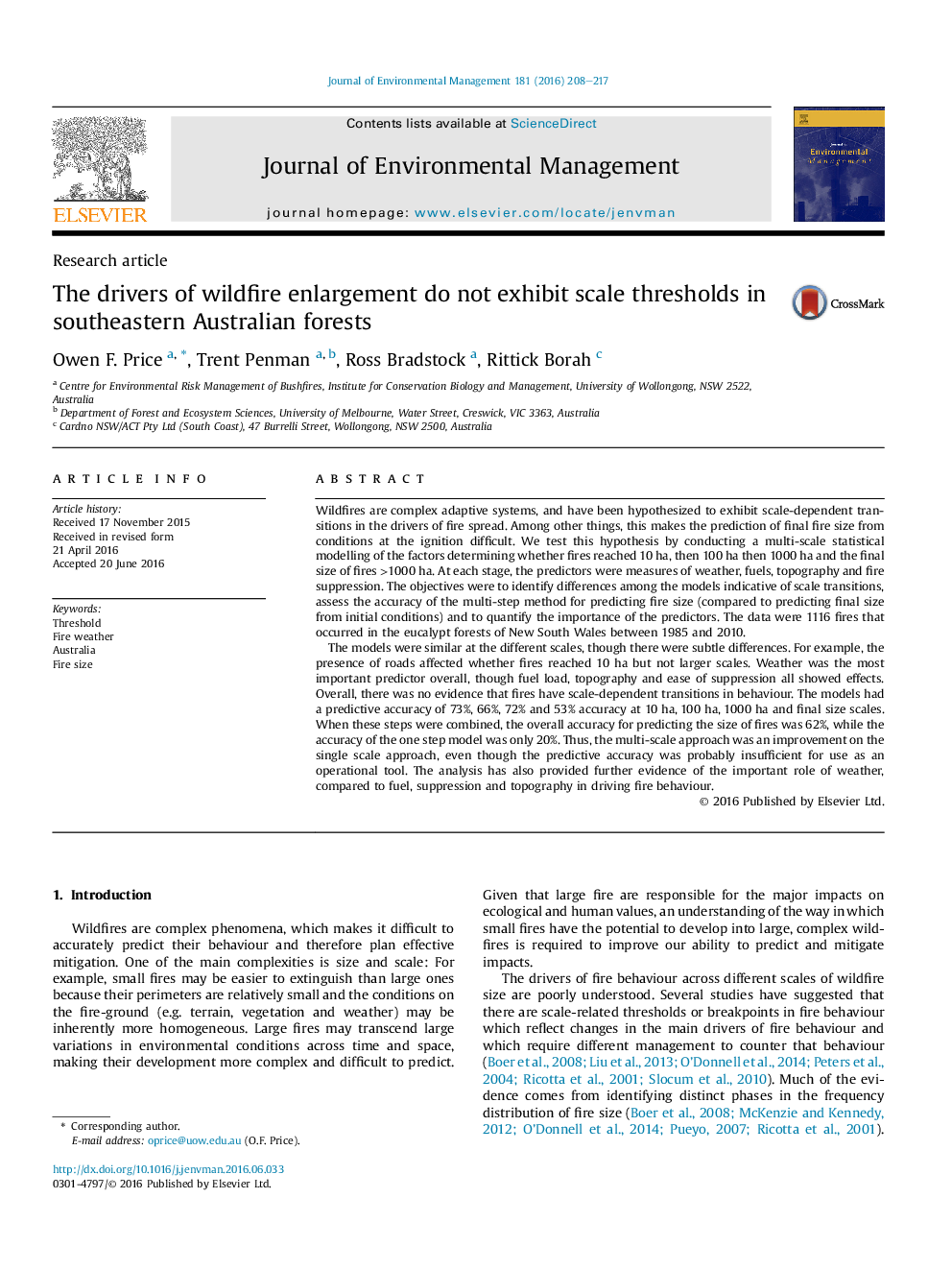| Article ID | Journal | Published Year | Pages | File Type |
|---|---|---|---|---|
| 7479530 | Journal of Environmental Management | 2016 | 10 Pages |
Abstract
The models were similar at the different scales, though there were subtle differences. For example, the presence of roads affected whether fires reached 10Â ha but not larger scales. Weather was the most important predictor overall, though fuel load, topography and ease of suppression all showed effects. Overall, there was no evidence that fires have scale-dependent transitions in behaviour. The models had a predictive accuracy of 73%, 66%, 72% and 53% accuracy at 10Â ha, 100Â ha, 1000Â ha and final size scales. When these steps were combined, the overall accuracy for predicting the size of fires was 62%, while the accuracy of the one step model was only 20%. Thus, the multi-scale approach was an improvement on the single scale approach, even though the predictive accuracy was probably insufficient for use as an operational tool. The analysis has also provided further evidence of the important role of weather, compared to fuel, suppression and topography in driving fire behaviour.
Related Topics
Physical Sciences and Engineering
Energy
Renewable Energy, Sustainability and the Environment
Authors
Owen F. Price, Trent Penman, Ross Bradstock, Rittick Borah,
